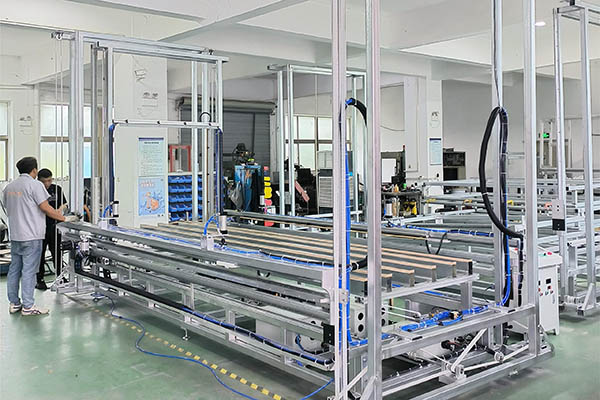Expanded Polystyrene (EPS) foam is a versatile material widely used in various industries, including construction, packaging, and crafts, due to its lightweight, insulating properties, and ease of use. Cutting EPS, however, requires specific techniques and tools to achieve clean, precise results without causing damage to the foam. In this article, we’ll explore the best methods for cutting EPS and introduce you to the different types of EPS cutters available to help you achieve the perfect cut.
Understanding EPS and Its Cutting Challenges
EPS foam is made up of small, tightly packed beads of polystyrene that are expanded and fused. While this structure gives EPS its beneficial properties, it also makes the material prone to chipping, crumbling, or melting if not cut correctly. Therefore, choosing the right cutting method and tool is crucial to maintaining the integrity and appearance of the foam.
Methods for Cutting EPS
There are several methods for cutting EPS, each suitable for different types of projects and requirements. The best method depends on the thickness of the foam, the desired precision, and the scale of the job.
1. Hot Wire Cutting
Hot wire cutting is one of the most effective and popular methods for cutting EPS foam. This technique involves using a thin wire that is heated to a high temperature and then passed through the foam. The heat melts the foam along the cutting line, creating a smooth and clean cut with minimal mess.
Advantages of Hot Wire Cutting:
- Precision: The hot wire allows for highly precise cuts, making it ideal for detailed shapes and intricate designs.
- Clean Cuts: Since the wire melts the foam rather than tearing it, the cuts are smooth and free of debris.
- Versatility: Hot wire cutters can be used for both straight and curved cuts, as well as for creating complex 3D shapes.
Recommended Tool: A hot wire EPS cutter is the best choice for this method. These cutters come in various sizes and configurations, from handheld models to larger, more sophisticated machines for industrial use.
2. Hot Knife Cutting
Similar to hot wire cutting, hot knife cutting involves using a heated blade to slice through the EPS foam. The blade is heated electrically and cuts through the foam with ease, producing clean edges and minimal debris.
Advantages of Hot Knife Cutting:
- Ease of Use: Hot knives are straightforward to operate and require minimal setup.
- Portability: Most hot knives are compact and portable, making them suitable for on-site work or small projects.
- Versatility: Hot knives can cut through various thicknesses of EPS foam and are suitable for straight cuts, bevels, and trimming.
Recommended Tool: A hot knife EPS cutter is ideal for those needing a versatile, portable cutting solution. These tools come in different sizes and power ratings, so choose one that matches the thickness of your foam and the scale of your project.
3. CNC Cutting
CNC (Computer Numerical Control) cutting is a method that uses a computer-controlled cutting machine to shape EPS foam according to precise digital designs. This method is ideal for large-scale projects or when highly detailed and repetitive cuts are required.
Advantages of CNC Cutting:
- High Precision: CNC machines can achieve a level of accuracy that is unmatched by manual cutting methods, making them perfect for complex designs and patterns.
- Efficiency: Once programmed, a CNC machine can cut multiple pieces quickly and consistently, which is ideal for production environments.
- Reduced Waste: CNC cutting minimizes waste by optimizing the cutting paths and reducing errors.
Recommended Tool: A CNC EPS cutter is the best option for businesses or individuals who require precision and efficiency for large-scale or detailed projects.
4. Manual Cutting with a Knife or Saw
For small or simple projects, a manual cutting tool such as a utility knife or fine-toothed saw can be used. This method is best suited for straight cuts and thin foam sheets.
Advantages of Manual Cutting:
- Accessibility: Manual cutting tools are widely available and inexpensive.
- No Power Required: This method is ideal for quick, small cuts where power tools are not necessary.
- Simple Setup: Minimal setup is required, making it easy for quick, on-the-go cuts.
Recommended Tool: A utility knife or a fine-toothed saw is sufficient for manual cutting. Ensure the blade is sharp and make several passes for thicker foam to avoid tearing.
Tips for Cutting EPS Effectively
- Choose the Right Tool: Select an EPS cutter that matches your project’s needs. For precise, clean cuts, a hot wire or hot knife cutter is usually the best choice. For intricate designs or large-scale production, consider a CNC cutter.
- Ensure Proper Ventilation: When cutting EPS, especially with hot tools, ensure the workspace is well-ventilated to avoid inhaling fumes.
- Use Safety Gear: Always wear safety goggles and gloves to protect yourself from potential burns, cuts, or flying debris.
- Practice Patience: Take your time to guide the cutter smoothly through the foam. Rushing the process can lead to jagged cuts and damage to the material.
- Test on Scrap Foam: Before making your final cuts, practice on a scrap piece of EPS to get a feel for the tool and to ensure your technique is correct.
Conclusion
The best way to cut EPS depends on the project requirements, the level of precision needed, and the available tools. For most applications, a hot wire EPS cutter provides the best combination of precision, ease of use, and clean results. However, for more detailed or large-scale projects, CNC cutting machines offer unmatched accuracy and efficiency. By understanding the different cutting methods and tools available, you can choose the most suitable approach for your specific needs and achieve professional-quality results with EPS foam.
Post time: 08-30-2024






